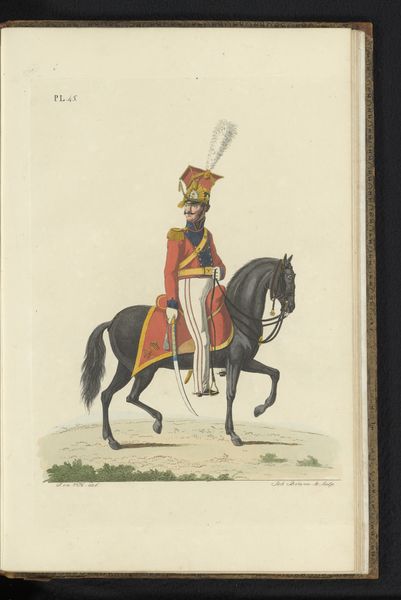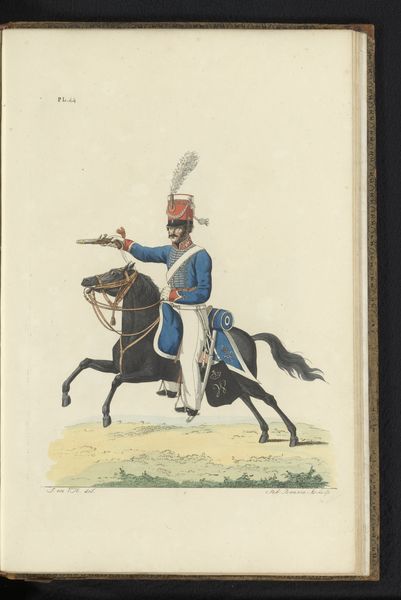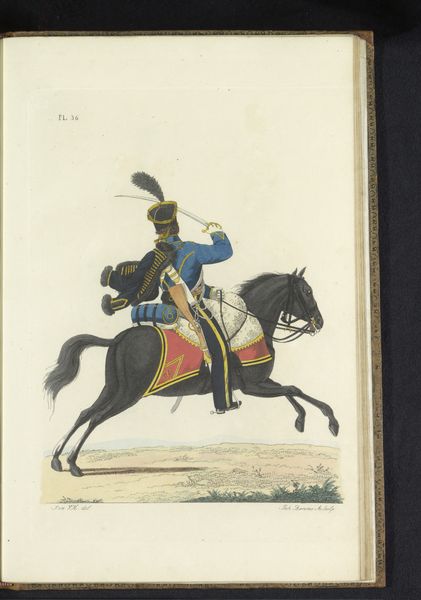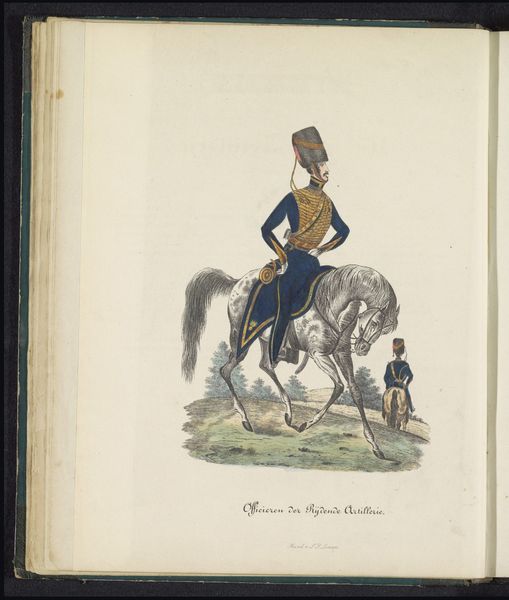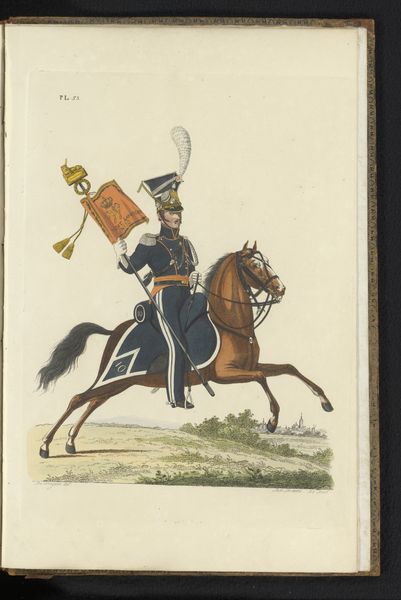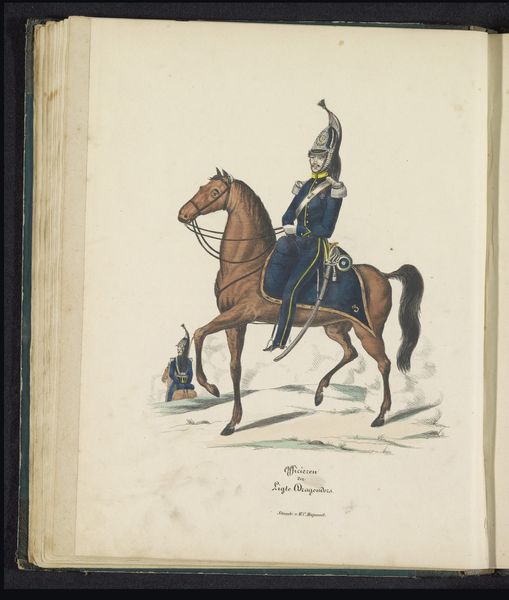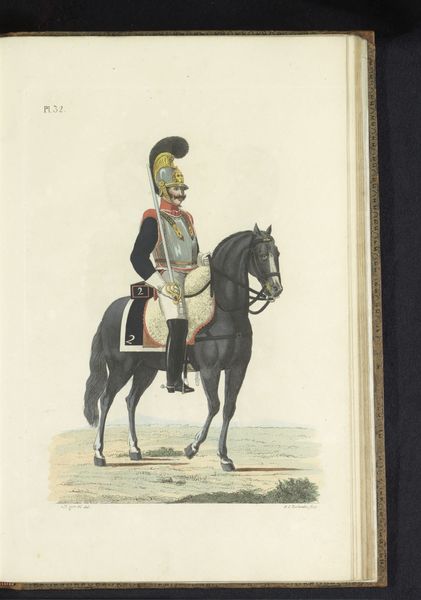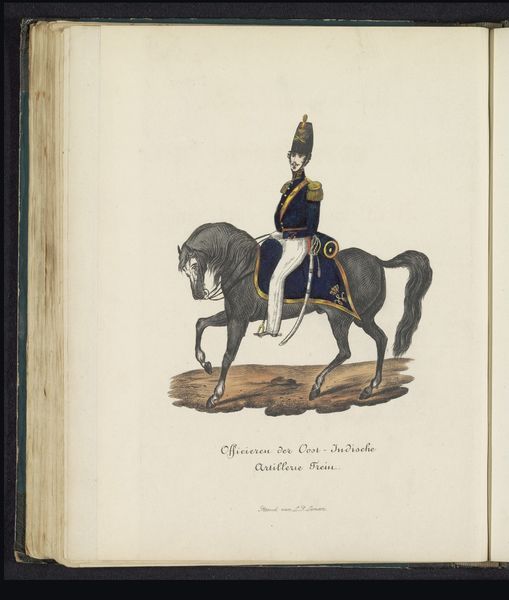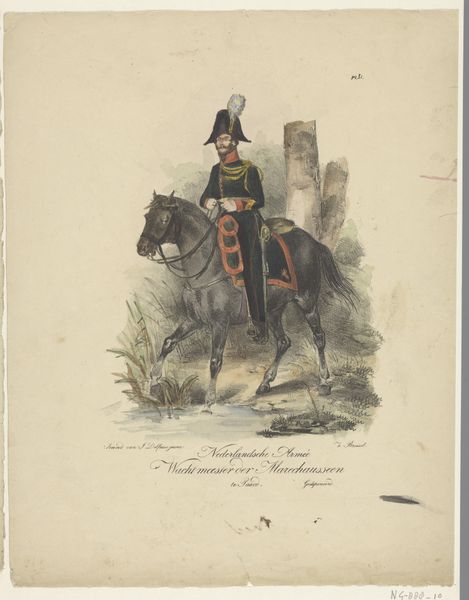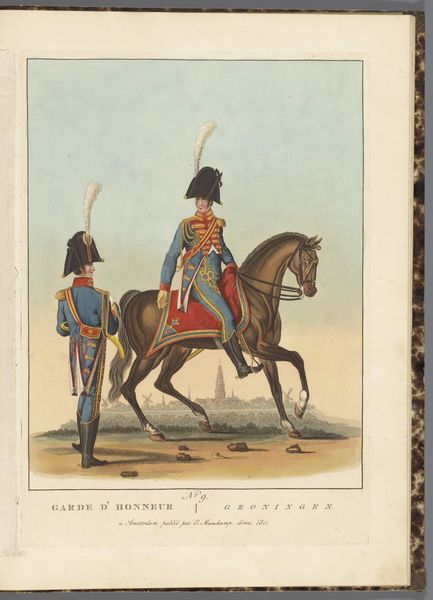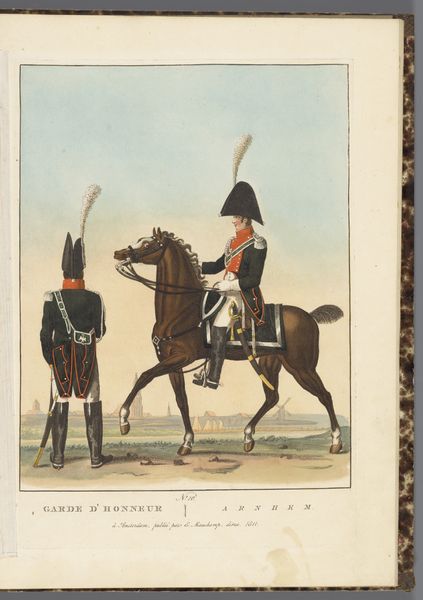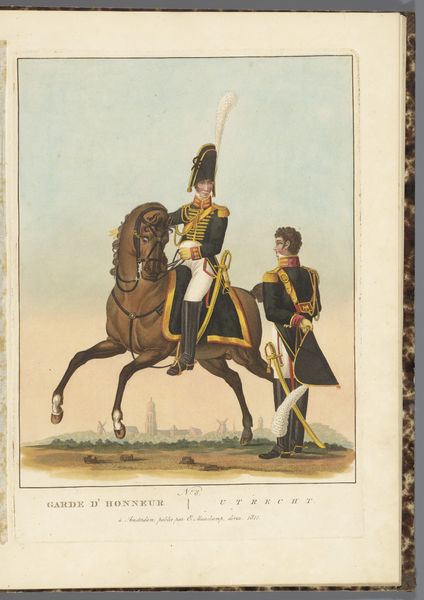
drawing, watercolor
#
portrait
#
drawing
#
16_19th-century
#
figuration
#
watercolor
#
coloured pencil
#
orientalism
#
watercolour bleed
#
watercolour illustration
#
genre-painting
Dimensions: height 300 mm, width 205 mm
Copyright: Rijks Museum: Open Domain
Curator: This watercolor drawing from 1823 by Joannes Bemme is entitled "Bengaalsche Lancier, te paard, idem, Troepen in de Oost-Indiën," or "Bengal Lancer, on horseback, similarly, Troops in the East Indies." It is currently held at the Rijksmuseum. Editor: Striking how controlled and contained this work feels, almost scientific in its precision. There is so much detail—particularly within the lancer's regalia—but a minimal use of color wash across the animal. Curator: Indeed. It is important to contextualize such a work within the framework of 19th-century Orientalism and the broader visual culture supporting colonial power. This rendering functions both as observation and as documentation. Editor: I agree. It speaks volumes about production too. The watercolor medium is practical for easy replication, allowing for wide circulation among audiences keen on "understanding" exotic regions and, I suggest, consumed along side a desire to claim exotic materials from faraway locations as part of Empire. It flattens complex social relations to create a digestible, reproducible artifact. Curator: And one used as propaganda and visual inventory. Note the careful detailing of the lancer's uniform and weaponry—almost fetishistic in their precision. The overall depiction certainly promotes an image of military strength and control, and a hierarchy of command as the empire expanded into different geographical contexts and cultures. Editor: Absolutely. The application of such careful craft obscures exploitation. Consider the labor involved, both by Bemme and by any studio assistants in multiplying such images, especially considering how the value of that labor gets diminished through the lens of Orientalism. Curator: It also speaks to shifting European views on race and cultural differences in the period. The careful depiction reinforces dominant European racial categorizations, solidifying power dynamics of the colonial regime. Editor: Ultimately, analyzing these illustrations encourages deeper critical thinking about how art shaped imperial history, in ways sometimes difficult to see at first glance. Curator: Yes, considering both its artistic production and historical context gives us so much more to contemplate in this detailed portrayal.
Comments
No comments
Be the first to comment and join the conversation on the ultimate creative platform.
